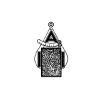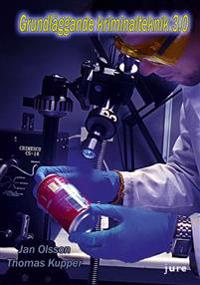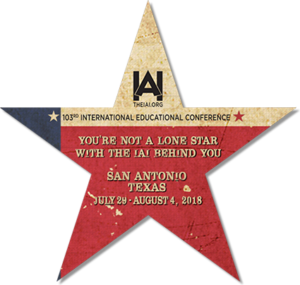The Top Articles of 2017 i Forensic Magazine, USA
With 2017 almost in our rear view, I thought now would be a good time for reflection. Here at Forensic Magazine, we are responsible for the print magazine you’re currently reading, as well as a website and a daily e-newsletter. The daily e-newsletter is filled with news, articles and insights from the editors, like myself, our Senior Science Writer Seth Augenstein (who is seemingly always on the phone with a researcher or police department), and our Associate Editor Laura French, who writes a great cybersecurity column every week featuring exclusive interviews with some of the most important people in the industry (search for “Virtual Case Notes” to read some of Laura’s columns.)
Michelle Taylor
Editor-in-Chief

As you can imagine, that leaves Forensic Magazine with a large amount of content after 260 working days in the calendar year. While the editors think all the content is interesting, of course, some articles get passed around and read many more times than others. Let’s revisit the top three articles published in 2017 on Forensic Magazine’s website.
1. ‘Chameleon’ Killer ID’d as Culprit in Four New Hampshire Barrel Bodies,
Published Jan.26. The Bear Brook Murders, one of the most infamous cold cases in American history, was broken open by investigators. But in a strange twist, they have honed in on the killer—but still lack the identities of the four victims found stuffed in barrels in the New Hampshire woods. A man known as Robert Evans in the 1970s and early 1980s in New Hampshire was the biological father of “Child 2,” one of the four victims. The man known as Evans also was an employee of the owner of the property where the bodies were discovered. In a complicated investigative web, it was the connection to two other missing persons cases in New Hampshire, and a completely separate murder in California, which have connected the dots of a serial killer who was apparently stalking multiple states from coast to coast—and likely has at least a half-dozen victims over decades, and potentially more. Throughout the year, Augenstein has vigilantly followed this story, writing five additional articles on the case. Since January, authorities have deciphered the Chameleon Killer’s true ID: Terry Peder Rasmussen. While the four females from the initial crime have still yet to be identified, authorities have tied Rasmussen to multiple other crimes as they continue to track his movements through the 70s and 80s.
https://www.forensicmag.com/news/2017/01/chameleon-killer-idd-culprit-four-new-hampshire-barrel-bodies-other
2. Cold Case Chronicles: The Acid Bath Murders
Published March 15. The second-most popular article on our site this year was actually printed in Forensic Magazine’s March 2017 issue, and authored by one of our experienced columnists, Dolly Stolze. “Cold Case Chronicles: The Acid Bath Murders” details the killings and eventual capture of John George Haigh, a serial killer more famous for his method of corpse disposal than how many people he killed or how he did it. Haigh murdered at least six people between 1944 and 1949 and used sulphuric acid to disappear their remains. He was only caught when, in a moment of arrogance, he led police to the remains of his final victim, Olivia Durand-Deacon. When police questioned Haigh in the disappearance of Durand-Deacon, he told them, “Mrs. Durand-Deacon no longer exists. She has disappeared completely and no trace of her will ever be found again. I have destroyed her in acid. You will find sludge that remains at Leopold Road. Every trace has gone. How can you prove murder if there is no body?” However, a pathologist from Scotland Yard analyzed the sludge and was able to retrieve human body fat, a partial left foot, bone fragments, human gallstones and a complete set of dentures, which was confirmed to belong to Durand-Deacon.
https://www.forensicmag.com/article/2017/03/cold-case-chronicles-acid-bath-murders
3. The Boy in the Blue Box: Greece, NY Cold Case Gets New Face,
Published Feb. 7. The skeleton of a child was found in a blue metal box in 1976, in the basement storage area of an upstate New York apartment complex most frequented by transients. The local police could only determine so much from the bones four decades ago. No one remembered the boy at the complex, especially since he had been dumped there a year before, or even earlier. They didn’t even know for sure whether the child was a boy or girl. But when a local Greece, New York police sergeant was recently assigned the case, he decided to leverage the latest 21st century resources by reaching out the National Center for Missing and Exploited Children. Now investigators have DNA, a gender, a facial reconstruction and some unique details of the boy’s short life story—as determined by forensic science—in an effort to determine who he was and how he died.
https://www.forensicmag.com/news/2017/06/boy-blue-box-greece-ny-cold-case-gets-new-face-leads




